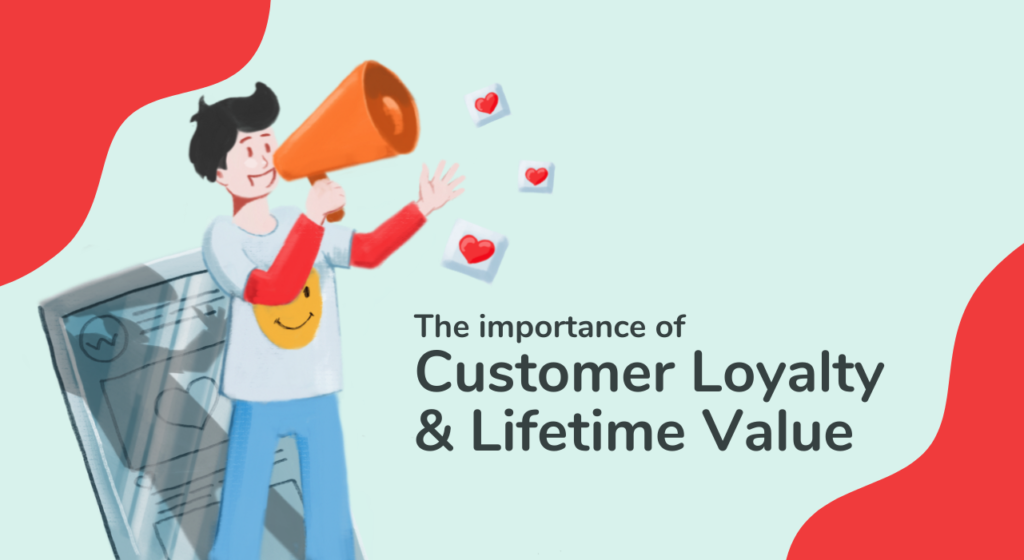L.T.V. and the Importance of Customer Loyalty

Understanding your Customer Lifetime Value and How to Use It
Have you ever wondered how much money you’ve spent on a particular product over the course of your life? Understanding the lifetime value of a customer is an incredibly important task that SaaS startups need to get a grasp of.
The Customer Lifetime Value (LVT or CLV) of your product is a vital metric tied directly to the health of your business – it’s the pulse of your company. You need to understand LVT and address this metric every quarter, which brings us to the obvious question:
What is Customer Lifetime Value? (And How Do I Use It?)

LTV is a metric that is determined by calculating how much revenue will be generated by a user over the course of their relationship or lifetime with the product. Understanding how much a customer is worth to the company before they churn has obvious benefits for pricing and marketing but it goes much deeper than that.
Think about this – what is your average cost to acquire new customers (CAC)?
If your CAC is higher than your LTV, your business is not healthy. Your CAC/LTV ratio is a primary indicator of the likelihood of growth. In fact, a healthy CAC/LTV ratio is 1: 3, You can likely see how this can be used to calculate things like pricing strategies and be used to project revenues – and you’re right!
LTV is incredibly useful for these types of calculations and projections, but it goes deeper still.
The Importance and Depth of LTV
Just as the health of your business can be gauged with this metric, so can many business decisions be made with it. We’re going to discuss some ways in which you can improve your LTV further on in this article, however, you can also use it to make decisions and bring your CAC down, which can be an easier strategy for fixing the ratio than bringing up the LTV.
It’s fairly straightforward: what contributes to your CAC?
Marketing and sales efforts, poor conversion rates, the list goes on. When you apply LTV as a benchmark across these different acquisition channels, you can determine which ones get the axe, and which ones get the gas. As the LTV metric combines customer retention with monetization data, it makes for an accurate representation of which customer acquisition strategies are doing well and which ones you can do without and thereby reduce your costs per.
This is also true for testing features and add-ons. Customer retention reflects satisfaction and because LTV indicates that customer satisfaction, you are able to gauge which features and add-ons are making an impact, and which ones to move past.
As mentioned, LTV is also used for financial planning and projecting SaaS growth. If you understand the relationship between CAC and LTV, it isn’t too difficult to extrapolate growth. A metric that allows your business to see into the future is going to assist you in all kinds of financial planning and spending.
How is Customer Lifetime Value Calculated?

There are many ways to calculate the LTV of your users, and it depends on your particular business model. For example, a subscription service can calculate LTV using a very simple equation as follows:
Take the average revenue per user per month and divide it by your monthly churn rate. A $500 per month subscription divided by a 5% churn rate equals $10,000, which is your LTV.
(500 / 0.05 = 10,000)
A non-sub model might prefer to know the total revenue they stand to gain from acquiring a new customer. This can be calculated by multiplying the average purchase value by the number of expected orders and time of engagement. By including the time of engagement, non-subscription SaaS businesses can account for the customer’s comings and goings over time.
How to Improve LTV – The Four Pillared Approach
At a higher level, there are four basic strategies for increasing LTV. Though, as mentioned, it is often easier to use LTV as a benchmark to lower other metrics like your CAC it is still possible to increase the lifetime value of your customer.
It’s advisable to adopt a well-balanced approach to increasing customer lifetime value – it’s the same logic that says simply increasing your rates is a short-sighted idea. Below are the 4 high-level strategies or pillars and below those are some more specific strategies to employ for your startup.

1) Increasing the average order value (AOV) – You’ve got 2 options here: raise the rates or increase the number of items sold. This is where add-ons come in as we will elaborate on below.
2) Purchase Frequency – Not in the sense of increasing sales or marketing campaigns, but from the user experience UX perspective. We use products we like, and the nicer they feel, the more we use them Creating a checkout experience that is smooth eliminates bounce, and increases purchase frequency.
3) Retention – Understanding what happened leading up to a churn can play a part in troubleshooting why, addressing the issue, and plugging all the holes in your boat, so to speak.
4) Profit Margin – Business 101 states that you can either increase rates or decrease expenses. Leaning up can contribute to this, but is not as often the ideal solution; Luckily there are strategies for increasing rates that help balance out the value you hold with your user- another important customer success metric which we will elaborate on further down.
(It’s not all about you, after all!)
Strategies to Improve LTV
Last-Minute Buys – Checkout is a great place to offer discounts and related or accessory-type items that compliment your product. The idea here is to increase the average order size of your customer. Checkout offerings are by no means a new idea and pre-exist the digital era by decades if not centuries -talk about tried tested and true!
Repeat Order Probability / Value – Understanding what makes your customers come back and use your product again has always been a key insight. This falls under the purchase frequency and retention umbrellas which point you in the direction of streamlining your checkout, data-driven quality control, and customer feedback.
Purchase Urgency – The good old-fashioned limited-time offer. Another way to increase the purchase frequency and offer value like discounts to your customer. A timeless classic. You can get a sense of how these strategies work in tandem more effectively than aggressively pursuing 1 or 2.
Retargeting Campaigns – If you use social media, you are familiar with retargeting campaigns. The fact is that companies use them because they are an essential piece of the marketing funnel that keeps leads in the loop. Retargeting is a great way to increase purchase frequency and retention.
Loyalty Programs – People love to be a part of a club. Loyalty programs are another brick-and-mortar era crossover success story that translates well into the SaaS domain. There are many ways to add value to your clientele and increase your LTV through purchase frequency, AOV, and retention.
Community Building – Here is a strategy that is somewhat similar to a loyalty program in benefit, but can be executed in a more organic fashion. Community building is a strategy that lies at the heart of most fundamental social media strategies and ideals and can be an extremely powerful and cost-effective way to increase LTV. This can be done by providing content and connection to your users and is also a fantastic strategy for increasing the topic of our next section:
Net Promoter Score (NPS) and the Customer’s Experience

Do you remember how we said it wasn’t all about you? It’s not! If LTV is an indication of the value your customer has to you: your NPS is the metric that represents the customer’s experience. NPS works like this:
“On a scale of 1 – 10, how likely are you to recommend this service to others?”
This can (and should) be followed up with a couple of automated questions to gain insight as to why they answered the way they did – that data is invaluable – but first, the formula:
Users who answer 9 or 10 are considered “Promoters”. Everyone 6 and under is a “Detractor”, with 7s and 8s coming and as “Neutrals”.
To get your NPS you simply subtract the percentage of Detractors from the percentage of Promoters. It is known as a “no-fluff” customer satisfaction metric. So why are we suddenly veering off and going into detail about another metric and even throwing a formula at you?
Because as much as things change, they still stay the same. Word of mouth is still the king of well-trusted marketing.
By understanding your NPS and your customer’s chances of promoting you and gaining insight into their experience you gain a deeper knowledge of what features marketing, pricing options, and strategies are working.
If LTV is the pulse, NPS is the breath.
When you pay close attention to these key numbers and use them to make key decisions, you maximize your chances of success and longevity.
Interested in Updating Your Website?
Contact us to learn more about our design & development services and other methods we use to grow our clients’ brands online.
